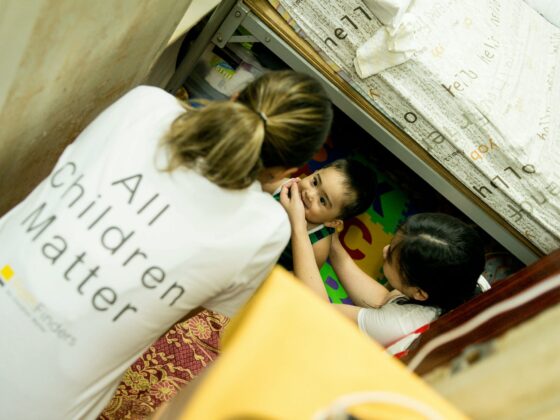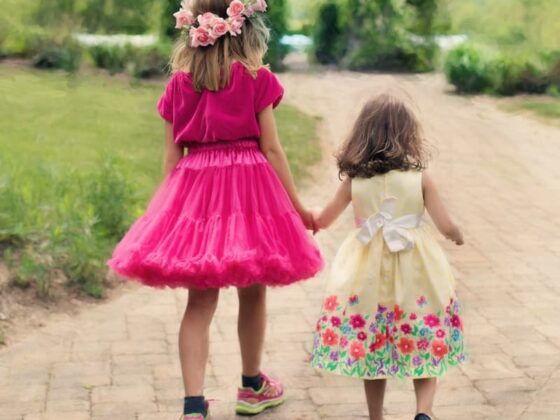The history of child labour in Hong Kong
Hong Kong first started considering issues regarding child labour over 100 years ago when, in 1921, the Government established a Commission to research into the situation and make recommendations for legislation.
At the time, children from the age of 10 often spent long hours working in dangerous occupations including factories, dockside and labouring – carrying enormous loads. Knitting factories were particularly prolific employers of children, especially girls (which was said to be due to the speed and dexterity of their little fingers). Since most factory work was paid piece rate and children were paid significantly less than adults, the potential for exploitation was rife.
On the back of the Commission’s findings and recommendations, the Industrial Employment of Children Ordinance was enacted in 1922. While the Ordinance defined a child as a person under the age of 15, it did not outright eliminate the practices of employing child labour. Instead it sought to regulate child labour, limiting certain types of work to certain age groups. The minimum age for children: (i) working in factories was 10, (ii) labouring was 12 and (iii) 15 for dangerous industries (which were to be defined via further regulation).
The Ordinance also provided that children should have one rest day in every seven days (a feature of today’s Employment Ordinance for all employees) and that they should not work between 7 p.m. and 7 a.m and not for more than nine hours per day. As can be seen below, many of these original measures have been adopted in today’s employment of children regulations, albeit with some amendments and further protections.
The legislation had an immediate impact. The age of a child for the purpose of the Ordinance was raised from 15 to 16 during the 1930s (with consequential amendments to the age when children could commence work in factories or labouring) and, from the late 1930s, it was reported that no children under the age of 16 worked in large factories, albeit smaller factories continued to employ children as young as 14 and reliable information does not exist regarding children employed by very small or unregistered factories.
The issue of child labour nevertheless persisted throughout the middle of the 20th century despite efforts by the Governments of the day to stamp out the practice. It is reported that in 1969/70 there were 541 cases involving 928 children; in 1971/72 there were 207 cases involving 268 children; and in 1972/73 there were 294 cases involving 360 children.
In August 1969 the Government conducted a special campaign against the unlawful employment of children under the age of 14 in industry. As a result of the campaign, 400 factory owners were prosecuted in respect of 1,708 children, 52 of whom were under 10 years old.
In answer to a question in the UK Parliament in December 1969 regarding the special campaign, the Secretary of State for Foreign and Commonwealth Affairs replied:
Law enforcement measures will continue to be vigorously pursued. The Hong Kong Government share our concern that there should be no exploitation of child labour. It is however difficult to devise and enforce measures of control outside industry, for example in family businesses and among those engaged in itinerant trading. I am aware of the tradition of employing young persons in Chinese tea houses to carry round trays of delicacies. There are regular twice-yearly surveys of employees in such establishments. This is a problem that is gradually diminishing with general changes in social habits.”
Throughout the 70’s, the Government continued its efforts to tackle the issue of child labour and introduced increasingly strict labour laws (along with expanding the requirement for mandatory education). These efforts largely lead to the protections via Regulations in 1979 and 1980 that remain in place (with some updating) today.
Today’s child labour protections
Today the Employment Ordinance continues to define a “child” as a person under the age of 15 years and also defines a “young person” as a person between the ages of 15 and 18.
The Employment of Children Regulations prohibit the employment of children: (i) under the age of 13; or (ii) in an industrial undertaking (other than for the preparation of food for consumption on the premises).
A child that has attained the age of 13 can be employed in a non-industrial establishment provided the child has completed Form III of secondary education (with necessary proof and consent from the parent). Such child employees cannot, however, be employed: (i) between 7 p.m. and 7 a.m; (ii) for more than 8 hours on any day; (iii) to work continuously for more than 5 hours without an interval of not less than 1 hour for a meal or rest; or (iv) to lift or carry any load exceeding 18 kg in the course of the employment.
A 13-year-old child that has not completed Form III of secondary education may still be employed non-industrial establishment if the parent: (i) can produce a valid school attendance certificate relating to that child; and (ii) has consented in writing to the employment.
The same restrictions as described above apply, however, in addition, such child employees cannot, however, be employed (i) in certain defined prohibited occupations; (ii) during school hours on any school day; (iv) during the school term for more than: 2 hours on any school day or 4 hours on any other day; (iii) during the summer holidays for more than 8 hours on any day.
Further information can be found in the Labour Department’s: “A Concise Guide to the Employment of Children Regulations”.
As an exception to the above, the Commissioner for Labour may grant special permission for children of whatever ages to be employed as entertainers, subject to certain restrictions as the Commissioner may specify. Further information can be found in the Labour Department’s “A Guide to the Employment of Child Entertainers”.
The Employment of Children Regulations do not apply in relation to children who are registered apprentices under the Apprenticeship Ordinance.
Employment of young persons in industrial establishments
Employment of “young persons” (i.e. aged between 15 – 18 years old) in industrial establishments is permitted, subject to the provisions of the Employment of Young Persons (Industry) Regulations. These regulations set out precise rules and restrictions governing working hours and certain restricted occupations, including underground work and defined dangerous trades.
Further information can be found in the Labour Department’s: “A Concise Guide to the Employment of Young Persons (Industry) Regulations”.
The annual reports of the Labour Department reveal the number of prosecutions brought before the courts each year for illegal employment of children. The 2019 and 2020 reports show that no cases were prosecuted under the Employment of Children Regulations or the Employment of Young Persons (Industry) Regulations in 2019 or 2020.
The article co-written by Adam Hugill and Harry Tang is part of The Shield of Justice campaign, which will run until December 2022 in support of Hong Kong Committee on Children’s Rights


